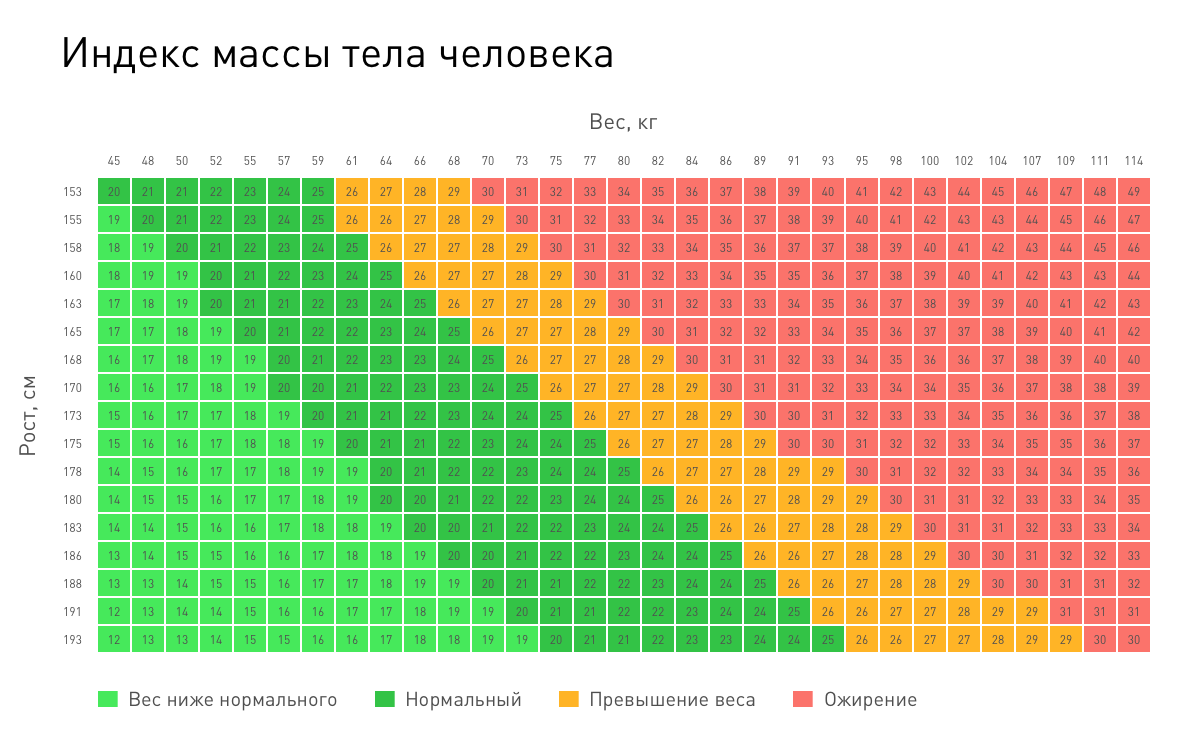In the last
article, we collected a list of factors that increase the risk of cancer. In this article, the experts of the
Solo project of the
Atlas biomedical holding will tell you which factors reduce the risk of developing a malignant tumor.
 Illustrations: Michael Kowalski
Illustrations: Michael Kowalski Quit smoking
Quit smoking
If you smoke, the best way to reduce the risk of cancer is to stop smoking. It's not so easy to do, because tobacco is highly addictive. There are several methods that can replace cigarettes if the smoker chooses to quit.
E-Sigs. They are safer than cigarettes, pipes and hookah. People who use electronic cigarettes instead of the usual for six months, according to the results of various tests have
a lower level of toxic and carcinogenic substances. This does not mean that electronic cigarettes are completely harmless, but they are well suited as an intermediate option for those who want to quit smoking.
Nicotine replacement therapy. This is a method of delivering nicotine to the body without carbon monoxide, tar and other harmful chemicals. Nicotine replacement drugs are different: patches, chewing gum, tablets and sprays. You can use one thing, but it is better to combine several drugs - then the probability of defeating nicotine addiction
increases .
Special preparations. Varenicline and bupropion are active substances used to treat nicotine addiction. The first blocks nicotinic receptors, and the second - an antidepressant, which reduces the craving for smoking. The effectiveness of
varenicline and
bupropion has been proven in randomized clinical trials. The medication should be prescribed and monitored by a doctor.
 Normalize weight
Normalize weight
It is quite difficult to assess how weight loss affects the risk of developing cancer apart from other factors. Nevertheless, a study on the effect of bariatric surgery on cancer incidence showed a link
between weight loss and a reduced risk of developing malignant tumors among women. Bariatric surgery includes stomach operations that help the patient lose weight.
For men, not everything is so straightforward and more research is needed. However, there is evidence that weight loss reduces the risk of developing
prostate cancer .
To find out if you have excess weight, you can use the body mass index (BMI). The index is not indicative of athletes and bodybuilders, pregnant and lactating women.

 Control viruses and infections
Control viruses and infections
Some viruses and infections can be eliminated if vaccinated and treated promptly.
Human papillomavirus cannot be cured if the infection has already occurred. You can only eliminate the effects and monitor it closely: remove warts, be regularly observed by a doctor.
There is a vaccine against human papillomavirus. Vaccination will bring the maximum benefit if a girl or young person gets it in adolescence before the start of sexual activity. Adults are recommended to be vaccinated up to 26 years. If the infection has already happened, vaccination will still be useful: it will
prevent infection with other oncogenic types of HPV.
Hepatitis B can be prevented if an inoculation is given while the infection has not occurred. It is difficult to completely get rid of hepatitis B, but treatment reduces the risk of developing liver cancer and other diseases. There is no vaccine for hepatitis C virus yet, but it is better treatable.
Human immunodeficiency virus cannot be cured completely, but with the help of treatment, it is possible to prevent the development of the disease before the onset of acquired immunodeficiency syndrome, which increases the risk of developing cancer. Most of the infections with the immunodeficiency virus occur during unprotected sex, so you should remember about contraceptive measures such as condoms.
The Helicobacter pylori bacterium is treatable with a course of antibiotics, but not in all cases it is necessary to get rid of it. Consult with a gastroenterologist first. After treatment, a person can become infected with Helicobacter pylori again, as the bacteria is transmitted through saliva.
 Do sport
Do sport
Regular physical activity
reduces the risk of developing colon cancer, breast cancer and endometrium (uterine lining). During exercise, the levels of growth factors, the hormone insulin and estrogen, which are associated with the development of a tumor, decrease. Also, regular exercise stimulates the immune system, which helps to destroy malignant cells.
Physical activity improves mood, helps to cope with depression, lose weight and feel better. All this improves the
quality of life and the survival of patients, even if the tumor is already diagnosed.

Exercises of moderate intensity include dancing, active games with children, walking with pets, housework or housework. Exercises of high intensity - running, climbing the mountain, swimming, aerobics, sports team games.
 Eat right
Eat right
Fruits and vegetables are a source of vitamins, minerals and dietary fiber. The use of large quantities of these products
can reduce the risk of developing certain types of malignant neoplasms. Also a large amount of fruits and vegetables in the diet helps control weight.
A diet high in fiber (found in whole grain and cereal products) reduces the risk of developing
colorectal cancer . High fiber foods reduce the interaction time between carcinogens and the epithelium of the rectum. Dietary fiber helps microbiota bacteria produce beneficial substances that reduce the risk of developing a malignant tumor.
A Mediterranean diet has been found to
reduce the risk of developing breast cancer. This diet has a high intake of vegetable proteins, whole grains, fish and monounsaturated fatty acids, as well as a low content in the diet of red meat and refined sugar.
It is not necessary to abandon the processed meat at all: it is enough to reduce its consumption to 70 grams per day. These are about a few slices of bacon. Replaced processed meat can be chicken, turkey, fish, seafood, legumes or vegetables.
Try to cook red meat at low temperatures, so that the content of carcinogenic substances in it is less. For example, instead of grilling beef, stew it with vegetables.
It is also recommended to reduce the consumption of salty foods, as it increases the risk of developing stomach cancer.
 Monitor alcohol use
Monitor alcohol use
The daily norm is the use of not more than 1 alcoholic drink for women and 1-2 drinks for men.
A standard drink contains about 18 ml of pure alcohol. It is approximately:
- 350 ml of beer.
- 240 ml of malt liquor or strong beer.
- 150 ml of wine.
- 45 ml of whiskey.
 Have a baby and breastfeed
Have a baby and breastfeed
To reduce the effects of estrogen and reduce the risk of developing breast cancer, women are recommended to give birth to a child under 30 years of age and choose breastfeeding for a period
of one year or more .
Oral contraceptives or hormone replacement drugs increase the risk of cancer, so consult with your doctor before using them. He will be able to correctly assess the risks of a malignant tumor specifically for you.

 Protect from the sun and radiation
Protect from the sun and radiation
Ultraviolet rays are of two types: UVA and UVB. The former damage the deeper layers of the skin, and the latter the superficial ones. You need to be protected from all kinds of rays, so choose a sunscreen that blocks UVA and UVB. Liberally apply the cream 30 minutes before the exit. Update the layer every two hours or after each swim.
To protect the skin from the harmful effects, also use sunglasses, cover your head and face with a hat or panama. At midday the sun is most active, therefore it is recommended to be in the shade from 11 to 16 o'clock.

The level of radiation in the house can be monitored using a special instrument of the dosimeter. If the level is above the norm, it can be adjusted.
To prevent radon from accumulating in the room, regularly ventilate the apartment or house. It is also recommended to repair the cracks in the floors and walls in the apartment and in the basement of the house, to replace the wooden floors with concrete, if possible, to carry out a ventilation system. But before starting repair work, consult with the engineer. Perhaps another solution to this problem will suit you more.
 Learn about hereditary predisposition
Learn about hereditary predisposition
Heredity is a genetic factor that a person cannot correct. However, it is important to properly assess the risks and closely monitor health, to reduce the likelihood of developing malignant tumors.
Each type of hereditary mutations that increase the risk of developing a tumor corresponds to a specific syndrome of hereditary susceptibility to oncology.
In order to estimate roughly whether you have a syndrome of hereditary susceptibility to malignant tumors, you need to recall the family history of the disease and answer the following questions:
- How many relatives in the family were diagnosed with a malignant tumor?
- What kind of cancer diagnosis was your relative?
- How old were the relatives when the illness began?
- Is the relative alive at the moment?
If several relatives of the first and second degree of relationship were diagnosed with a malignant tumor, then you may have a predisposition. But the answer to this question can only doctor-geneticist according to the results of the analysis. A complete
genetic test can be replaced by PCR for the presence of individual mutations.
It must be remembered that malignant tumors are different. The risks of development of each type vary widely and depend on the age of the person. Therefore, we do not recommend engaging in self-diagnostics in order not to get false notions about our hereditary predispositions.

Patients with a high risk of developing a malignant tumor are observed by a doctor and are regularly examined. In some cases, such patients are offered a preventive surgery.
Bilateral prophylactic mastectomy, an operation to remove the mammary glands,
up to 90% reduces the risk of developing breast cancer in women with the BRCA1 and BRCA2 mutation.
About 1% of women have a high risk of developing breast cancer. These include actress Angelina Jolie. Knowing about her risk, she performed a mastectomy and an operation to remove the ovaries and fallopian tubes. These measures have reduced the risk of cancer - and inspired many women to make informed decisions and attentive attitude to their health.
 Reduce stress
Reduce stress
Studies have shown that people who experience chronic stress have problems with digestion, fertility, sleep, and a weakened immune system.
When a person is under stress for a long time, his behavior includes protective mechanisms: a tendency to overeating, smoking, and drinking alcohol. All this increases the risk of developing cancer.
Exercise, breathing practices, meditation, relaxing music, communication with loved ones help cope with stress.
Today
Atlas figured out what and how can reduce the risk of cancer. In the next article, we will explain why it is difficult to detect a tumor at an early stage and how screening differs from early diagnosis.
Other articles about cancer:
- Disease development mechanism
- Risks and myths .